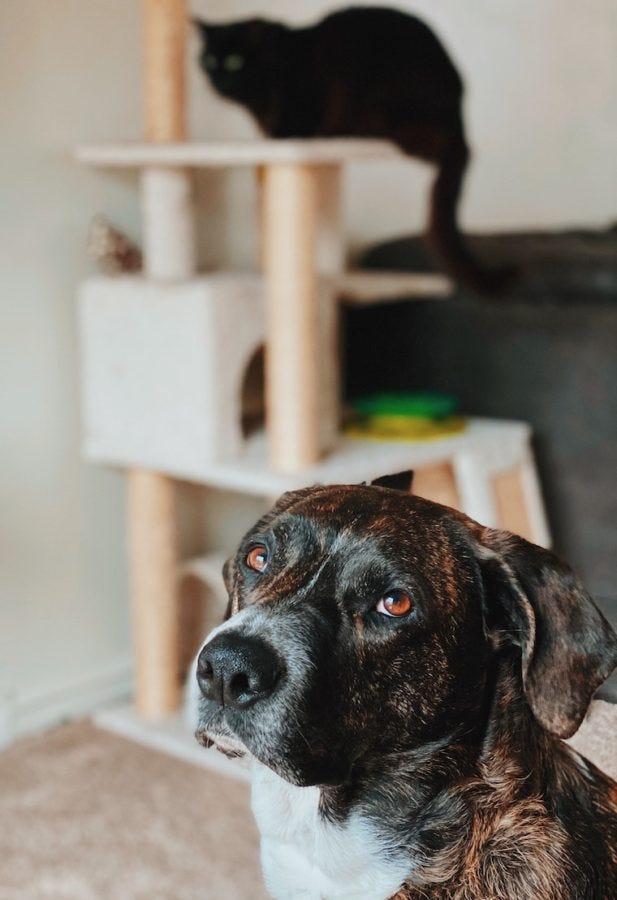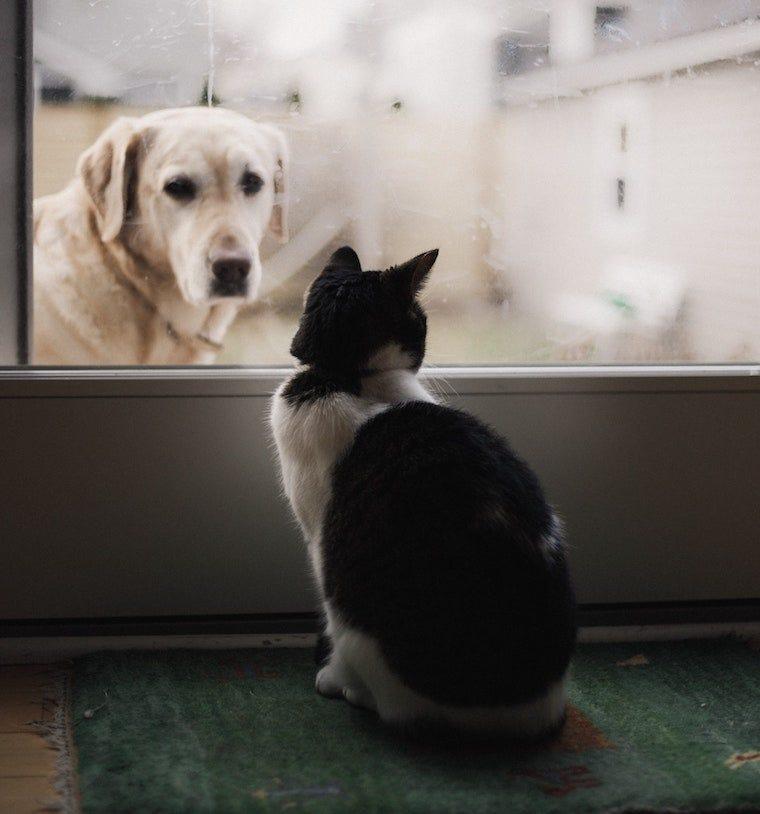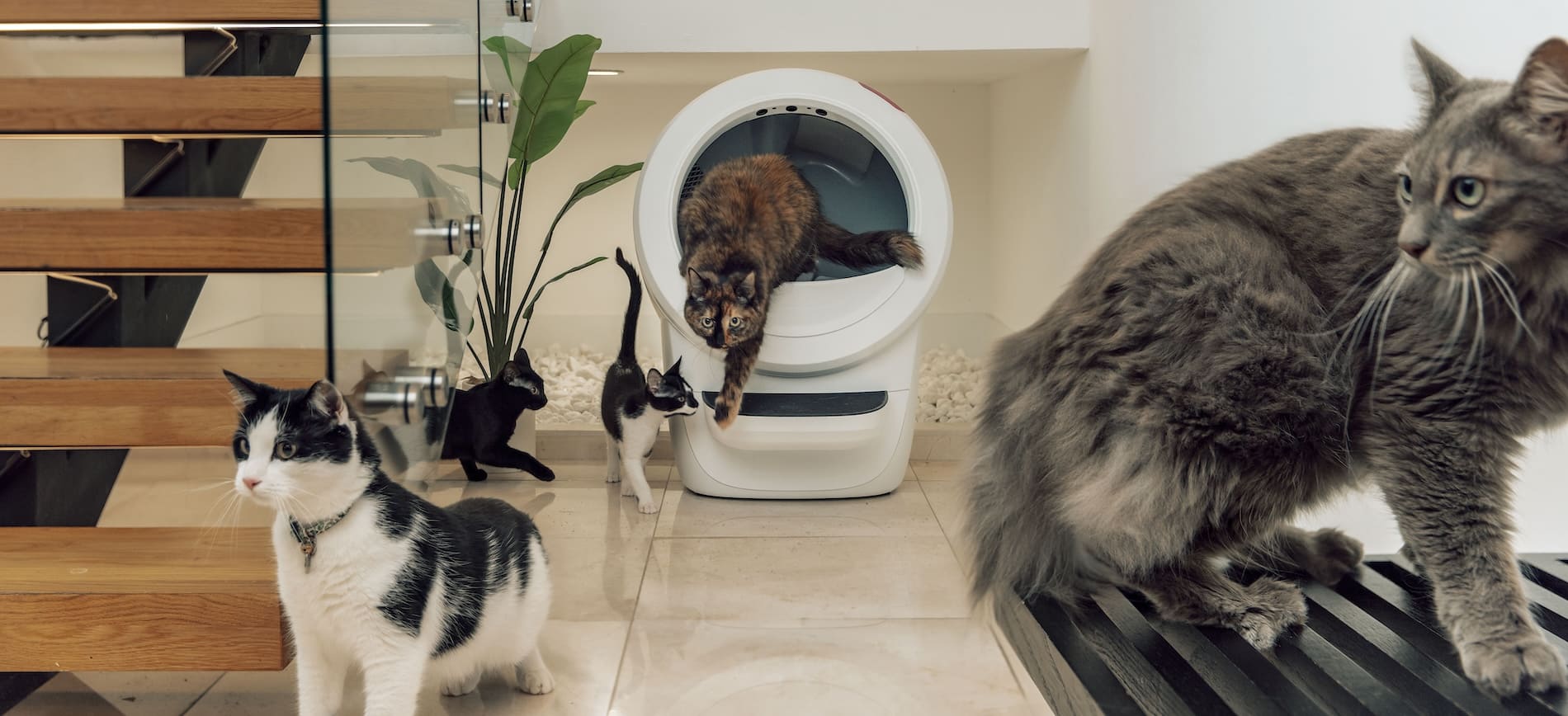Cats and dogs: friends, foes, or frenemies? No matter your opinion on the matter, it’s important to keep the peace in your pet household—particularly when a new species enters the picture. If you’re wondering how to introduce a cat to a dog (or how to introduce a dog to a cat), check out the tried-and-true methods listed below.

First: Is it a good match?
Whether you’re introducing a new cat to your resident dog or introducing a new dog to your resident cat, you should first consider what an ideal match would be between pets. Take the animals’ breeds, personalities, and sizes into consideration. After all, certain dogs have a stronger prey drive, while some cats are excessively shy or fearful. Also take into account your housing situation: Do you have enough space to accommodate a safe introduction between cats and dogs?
American Humane provides some specific tips when it comes to matching cats and dogs by personality:
- If your dog loves chasing things, choose a calm, confident cat that will not run in fear or in play. (It’s best to limit chasing even if both cat and dog are being playful.)
- If your dog plays roughly, avoid kittens or elderly cats that can easily be hurt. Instead, choose a playful yet confident adult cat.
- If your cat is rambunctious or playful, choose a dog that is playful but gentle.
- Finally, if your dog or cat is elderly, laid back, quiet, or anxious, then choose a calm animal counterpart.

How to introduce cats and dogs
Felines and canines may seem like they’re from two different planets, but they actually shared a common ancestor… some 43 million years ago. Fast forward to today, and there are dog-like cat breeds, cat-like dogs, and everything in between!
Introducing cats and dogs doesn’t have to be difficult and scary. Above all, do not throw both animals together in a face-to-face meeting right off the bat—at least not without very close supervision.
1. Prepare a safe space for the cat
The first step in preparing how to introduce a cat to a dog includes creating a “safe space” for your cat—whether you’re adopting the cat or it is your resident cat. You’ll need a room with a secure door (and secure ceiling and walls—you wouldn’t believe what spaces cats can squeeze into!).
This safe space for your cat will of course include food, water, and a litter box. You’ll also want to provide toys, cat beds, a scratching post or two, and perhaps some high shelves or cat towers that allow the kitty to feel secure.
Eventually you may be allowing the dog access to this space, so it’s best to have a dog-proof litter box—aka, prevent the dog from “snacking.” This might be a self-cleaning litter box that automatically cycles the waste into a drawer, or cat furniture that makes the litter box inaccessible to the dog.

2. Familiarize through barriers
Once your cat is comfortable in her own room, you can let the animals become familiar with each other’s scents, sounds, and more. There are several ways to do this:
- Swap scents: Switch blankets, beds, or even toys between the cat (or kitten) and dog (or puppy) to let them get accustomed to the other’s smell. You can also rub a towel on one, then the other, and back again.
- Rotate rooms: Allow your cat to explore the rooms the dog resides in while the dog is in his crate or outside. Likewise, let your dog sniff around the cat’s room while she is comfortably settled somewhere else.
- Feed on either side of a closed door: Animal Humane Society explains that this idea “is to teach them to associate the presence of the other pet with pleasant things, such as food. With each feeding, move their food bowls a little closer to the closed door. Continue this process until each pet can eat calmly right next to the door.”
- Use a baby gate: Once both pets have had several days or a week to get familiar with each other’s smells and sounds, use a baby gate or similar barrier to allow them to see each other without interacting. This will also give you a better idea of how soon you can proceed to making leashed introductions. For instance, if your dog barks, growls, and/or lunges at the gate upon seeing your cat, it may be too soon to introduce them. (Same goes for your cat’s hissing.)
3. Make leashed introductions
During the first face-to-face meeting between your pets, make sure the dog is securely leashed. Allow the cat to come and go as she wishes. Start with short sessions, ending them before either pet shows stress. The goal is to get to a point where your dog is calm around the cat, perhaps not even paying attention to her.
Reward both your dog and cat for their good behavior around one another with treats and lots of affection. If either animal acts aggressively, “calmly distract and redirect them” with a toy or treat (Animal Humane Society).

4. Let them loose together
Leave your dog’s leash on, but allow him to move freely in the same room as the cat with the leash dragging behind him. If there’s any sudden aggression, you will still be able to restrain the dog using the leash. Don’t let the dog chase the cat, and make sure your cat has access to her “safe space” at all times.
Keep your pets separated from one another when you’re not home for the time being. Continue these supervised, “off-leash” sessions until both animals seem relaxed around each other.
5. Finally, allow unsupervised interactions
Animal behaviorists recommend that cats and dogs should not be left alone together unsupervised for at least the first month. Once you’re positive the animals won’t try to hurt each other (even accidentally, such as through rough play), you can allow unsupervised interactions. Continue positive reinforcement with both pets. Don’t be dismayed if you feel you need to take a step back and separate the animals again—it’s better to be safe and take things as slowly as necessary.
Knowing how to introduce a cat to a dog is an essential part of adding a new member to your pet household. A rushed introduction can compromise the pets’ relationship forever—or be outright dangerous. Introducing cats and dogs slowly and sensibly is the best thing you can do for you and your furry family members.
Sources:
Cover photo by Yan Laurichesse on Unsplash









